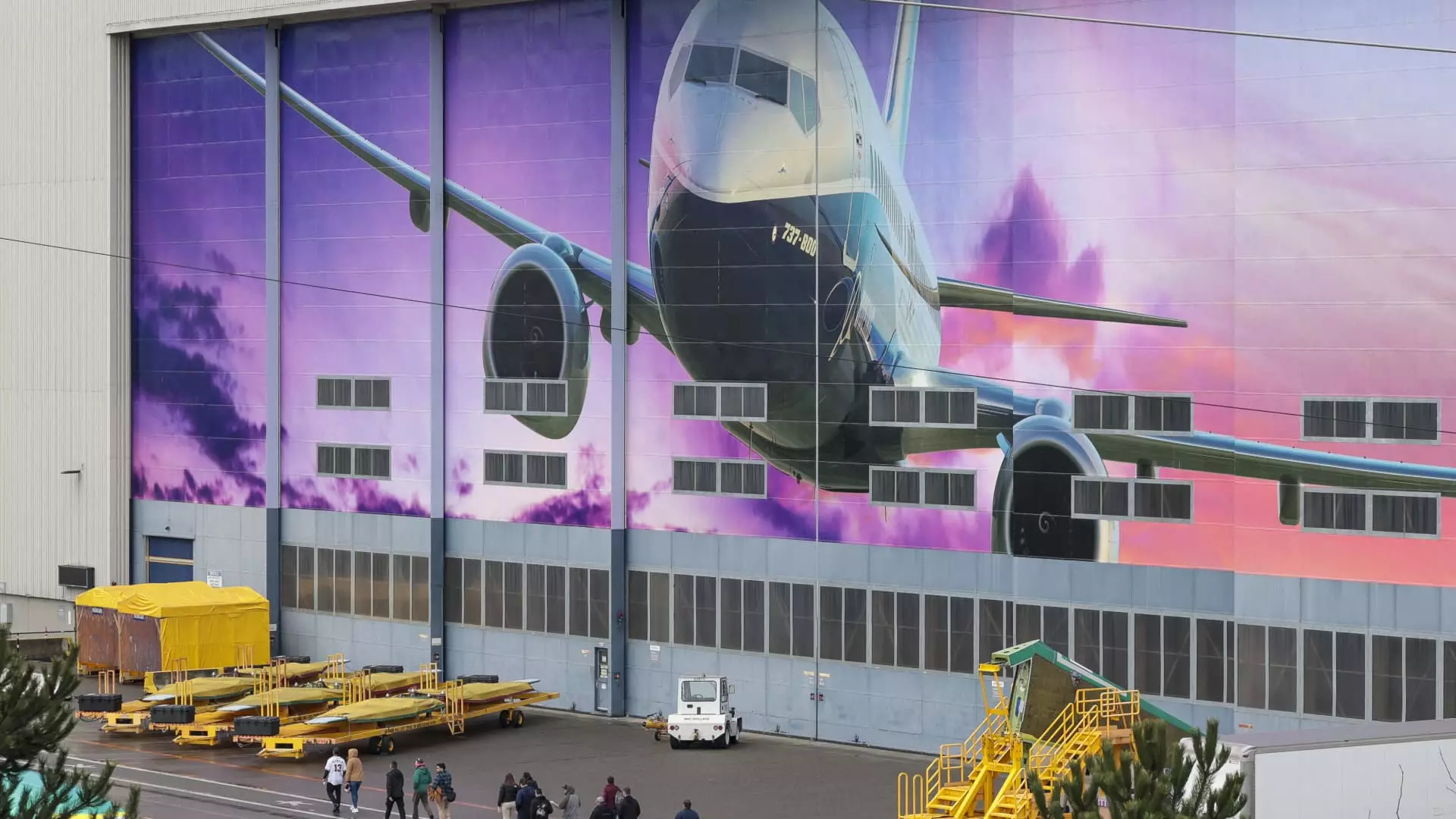Boeing, a titan in the aerospace industry, is cautiously navigating through the wreckage of multiple crises, and recent announcements from the company’s finance chief, Brian West, signal a potential turnaround. After enduring a staggering cash outflow of approximately $14 billion last year—culminating with a $4 billion dip in the last quarter—Boeing appears to be gaining some traction. According to West, the company is on a path to significantly reduce this cash burn, possibly by “hundreds of millions,” which could hint at a newfound optimism within the corporate structure.
This optimism is not unwarranted. Following West’s remarks at a recent Bank of America investor conference, the market responded favorably, catapulting Boeing’s shares up nearly 7%, further buoying the Dow Jones Industrial Average and the S&P 500. For a company that has not seen annual profits since 2018, these small victories symbolize hope amid daunting challenges.
Production Challenges: A Balancing Act
However, Boeing’s aspirations are still coupled with considerable obstacles. The financial optimism comes against the backdrop of multiple manufacturing and safety crises that have cast shadows over production capabilities. A noteworthy incident includes a significant fire at a fastener factory in Pennsylvania, an event that West asserts will not impact Boeing’s output in the immediate term due to existing inventory levels. Nevertheless, it raises concerns about the longer-term implications for supply chain stability—something the company can hardly afford to overlook, especially given its history of production issues.
The current production plan aims for a modest increase, with targets of 38 737 Max aircraft and seven 787 Dreamliners per month. Yet, this ambition is tethered to regulatory caps imposed by the Federal Aviation Administration (FAA), which has limited Boeing’s capacity to ramp up production until certain safety benchmarks are met. The lingering restrictions are a reminder of the broader challenges faced by aerospace manufacturers, highlighting how regulatory environments can stymie not just growth, but confidence in the brand itself.
Economic Conditions and Political Ramifications
The political landscape further complicates matters for Boeing. With the mention of President Donald Trump’s proposed tariffs, the company’s CFO downplays immediate concerns, indicating a desire to separate operational recovery from external uncertainties. However, one must question whether this detachment is feasible. Tariffs, uncertain market conditions, and ongoing geopolitical dynamics can exert pressure on operational strategies, ultimately skewing production cost trajectories.
In a polarized political landscape, companies like Boeing must navigate not just market forces but also the whims of political decision-makers, who wield significant influence over their operational landscapes. The impact of such uncertainties, as West conceded, could be profound depending on their duration and intensity.
Boeing’s journey towards recovery is akin to a phoenix rising from ashes, fraught with the potential for both success and further setbacks. This duality encapsulates not only the company’s immediate outlook but also serves as a microcosm of the broader challenges faced by industries striving to adapt in a volatile economic and political climate. As Boeing looks to reclaim its footing, one must remain vigilant about the evolving narratives shaping its future.


Leave a Reply